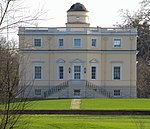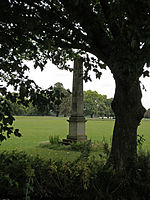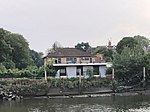Sheen Priory

Sheen Priory (ancient spelling: Shene, Shean, etc.) in Sheen, now Richmond, London, was a Carthusian monastery founded in 1414 within the royal manor of Sheen, on the south bank of the Thames, upstream and approximately 9 miles southwest of the Palace of Westminster. It was built on a site approximately half a mile to the north of Sheen Palace, which itself also occupied a riverside site, that today lies between Richmond Green and the River Thames. All above-ground traces of the priory have disappeared, yet it is known that the foundations of the priory church lie to the immediate southwest of Kew Observatory, under the fairway of the 14th hole of the Royal Mid-Surrey Golf Course, in Richmond Old Deer Park. It is sometimes incorrectly referred to as Richmond Priory, due to the subsequent renaming of Sheen Manor in 1501.
Excerpt from the Wikipedia article Sheen Priory (License: CC BY-SA 3.0, Authors, Images).Sheen Priory
Church Street, London Isleworth (London Borough of Hounslow)
Geographical coordinates (GPS) Address External links Nearby Places Show on map
Geographical coordinates (GPS)
| Latitude | Longitude |
|---|---|
| N 51.4681 ° | E -0.3148 ° |
Address
Sheen Priory
Church Street
TW7 6BD London, Isleworth (London Borough of Hounslow)
England, United Kingdom
Open on Google Maps








